Understanding the 4uF Capacitor: Applications, Selection, and More
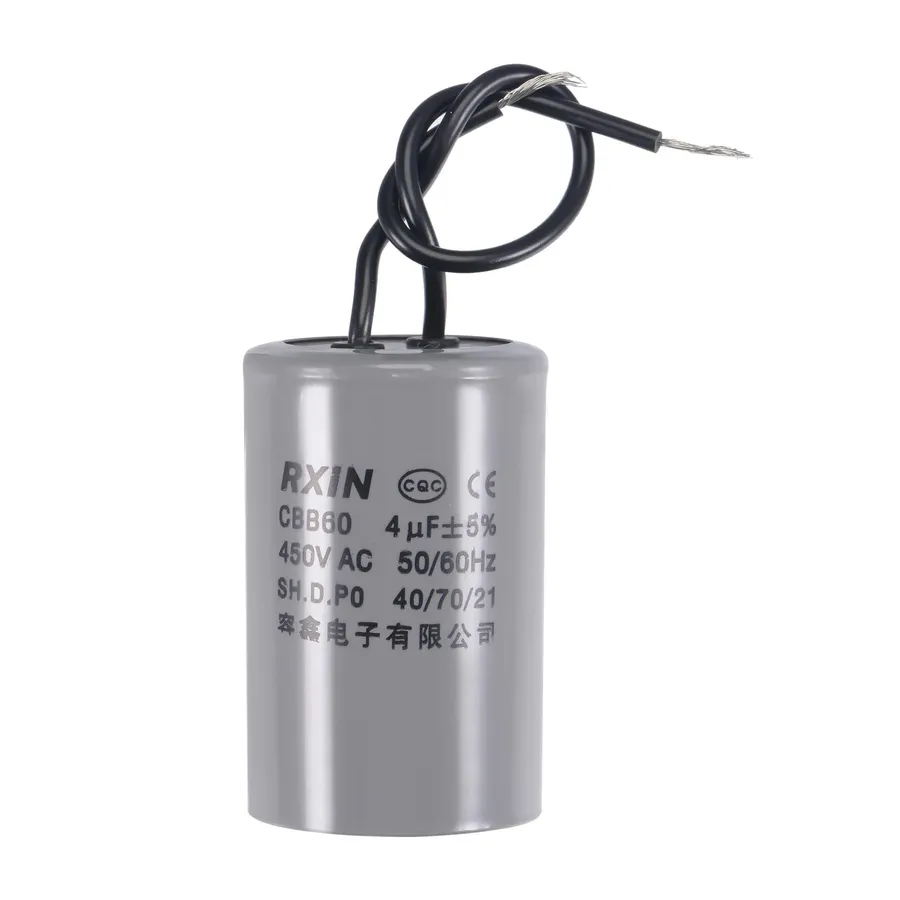
Have you ever wondered what makes a motor keep running smoothly? Often, the unsung hero is a small, but mighty component: the 4uF capacitor. Much like how a heart beats rhythmically, the 4uF capacitor provides the necessary electrical 'push' in various applications from household appliances to industrial equipment. In this article, we'll explore the function, selection criteria, and applications of a 4uF capacitor, guiding you through the essentials and helping you demystify this component.
What is a 4uF Capacitor and How Does It Work?

A 4uF capacitor is a fundamental electronic component characterized by its ability to store electrical energy within an electric field. The designation '4uF' indicates its capacitance value, specifically 4 microfarads (4 x 10^-6 farads). Capacitors, including 4uF variants, operate by accumulating electrical charge on two conductive plates separated by a dielectric material. This storage process is directly proportional to the applied voltage, and when the voltage source is removed, the stored energy is released. Within circuits, 4uF capacitors play diverse roles, including filtering, timing, and energy storage.
Key Applications of 4uF Capacitors
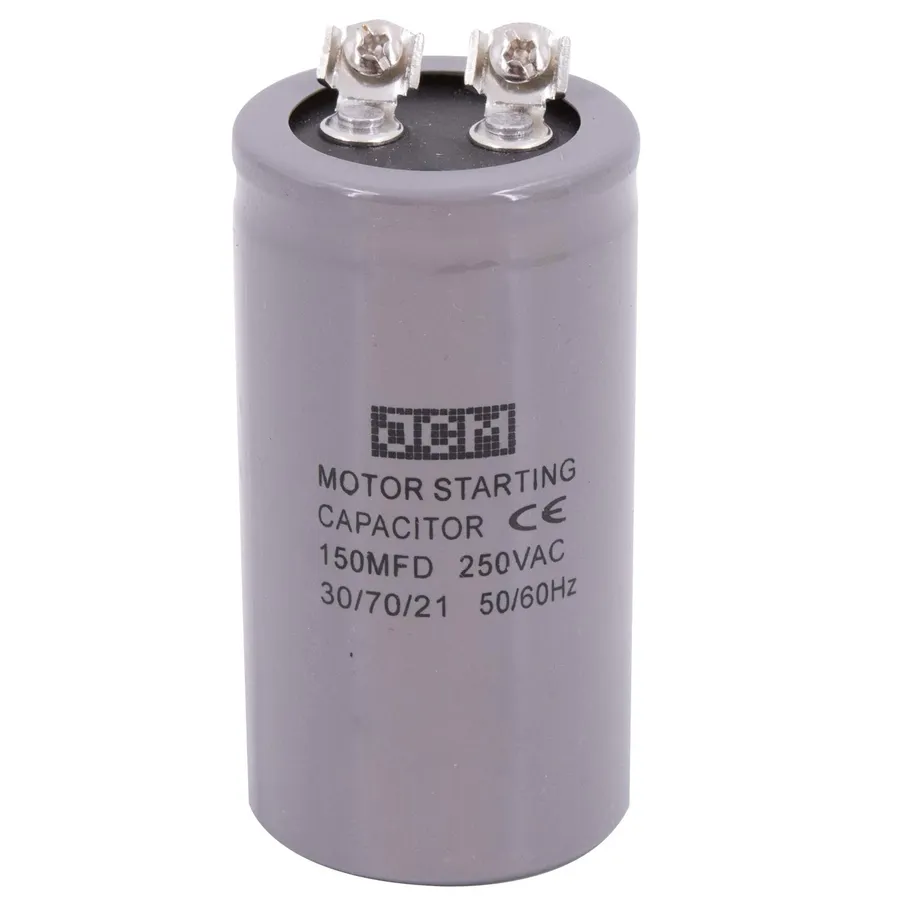
4uF capacitors are indispensable components in a variety of electrical applications, primarily due to their ability to store and release electrical energy. Their specific capacitance makes them ideally suited for applications requiring moderate energy storage or phase shifting, particularly within single-phase AC circuits.
- Single-Phase Motors
4uF capacitors are frequently used as run capacitors in single-phase AC motors. These capacitors provide the necessary phase shift to create a rotating magnetic field, which is crucial for starting and maintaining motor operation. In some motor designs, they may also serve as start capacitors, although larger capacitance values are more common for this role. The 4uF capacitor assists in providing the torque to rotate the motor's rotor. - Air Conditioners
In air conditioning systems, 4uF capacitors often function as run capacitors for the fan motors, both for indoor and outdoor units. These capacitors are crucial for the continuous, efficient operation of the fan, and sometimes the compressor motor, ensuring the proper distribution of air and cooling. - Refrigerators
Similar to air conditioners, refrigerators employ 4uF capacitors to facilitate the operation of their fan and compressor motors. These capacitors ensure the consistent and reliable functioning of the refrigeration system. - Pumps
Various types of pumps, including water and submersible pumps, may use 4uF capacitors to enable the motors to start and run efficiently. The capacitor provides an electrical phase shift to produce a rotational force. - Generators
In some portable generators, 4uF capacitors are integrated into the voltage regulation circuit, helping to ensure a stable and consistent output of electricity. These capacitors contribute to the smooth performance of the generator by aiding in voltage smoothing. - Other Electrical Appliances
The 4uF capacitor's characteristics make it suitable for a wide array of other appliances such as fans, ventilation systems, and other devices that operate on single-phase motors, which benefit from their energy storage and phase-shifting capabilities. The selection of the specific capacitor is dictated by the device electrical load characteristics.
Selecting the Right 4uF Capacitor: Voltage Rating, Type, and Tolerance
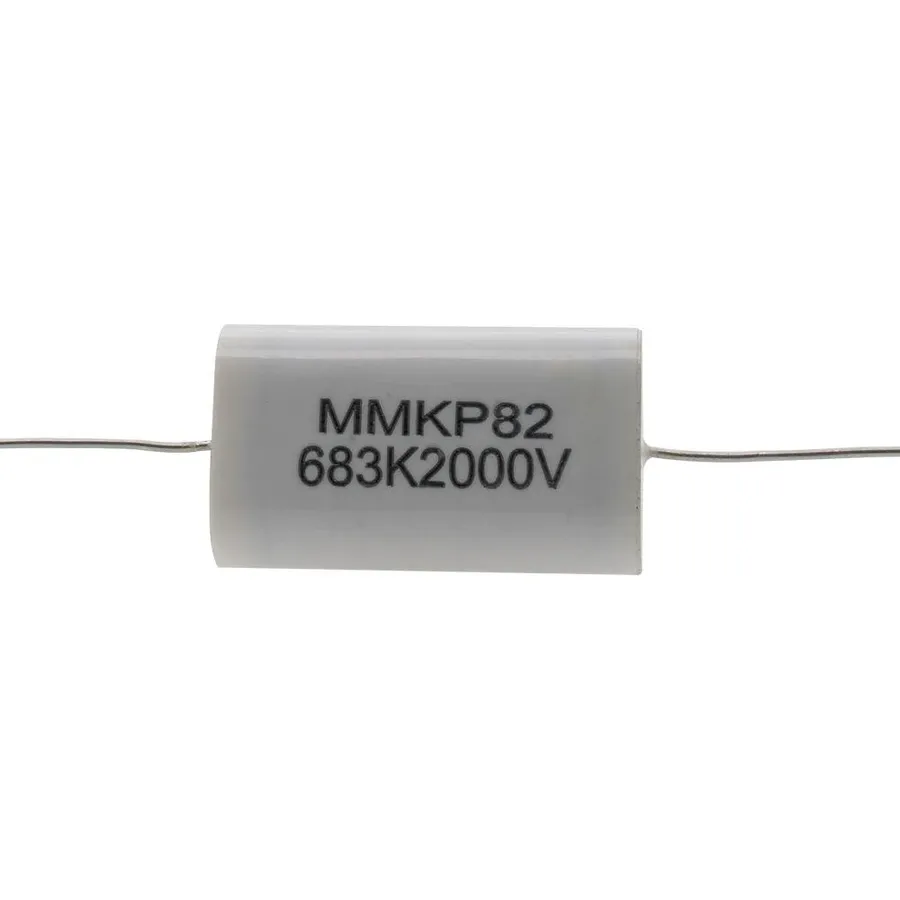
Selecting the appropriate 4uF capacitor involves a careful consideration of its voltage rating, material type, and tolerance to ensure optimal performance and longevity in its intended application. These parameters are not interchangeable and directly impact the capacitor's ability to function reliably within an electrical circuit.
| Parameter | Description | Importance |
|---|---|---|
| Voltage Rating | The maximum voltage the capacitor can safely withstand without damage (e.g., 250V, 300V, 450V AC). | Ensures the capacitor does not fail due to overvoltage, leading to potential circuit damage or safety hazards. Should always meet or exceed the operating voltage of the application. Common ratings include 250V, 370V, and 450V AC. |
| Material Type | The dielectric material used in the capacitor's construction (e.g., film, electrolytic, ceramic). | Affects the capacitor's stability, operating temperature range, size, and cost. Different materials are suited to different applications based on their electrical and physical properties. Film capacitors are generally preferred for motor run applications due to their reliability and long lifespan, whereas electrolytic types are suitable in applications where higher capacitance is needed and space is a concern. |
| Tolerance | The acceptable variation from the nominal capacitance value (4uF) expressed as a percentage (+/-%). | Impacts the precision of the circuit. Lower tolerance (e.g., +/-5%) provides higher accuracy and consistency, while wider tolerances are acceptable in less sensitive applications. Common tolerance ranges are +/- 5%, +/- 10%. |
For instance, using a 4uF capacitor in an AC motor application requires specific attention to the voltage rating. Exceeding the voltage rating will result in premature failure of the capacitor which can lead to motor malfunction. Similarly, the tolerance of the capacitor directly impacts its performance in timing circuits or other applications that require precise capacitance value.
4uF Capacitor Equivalents and Replacements
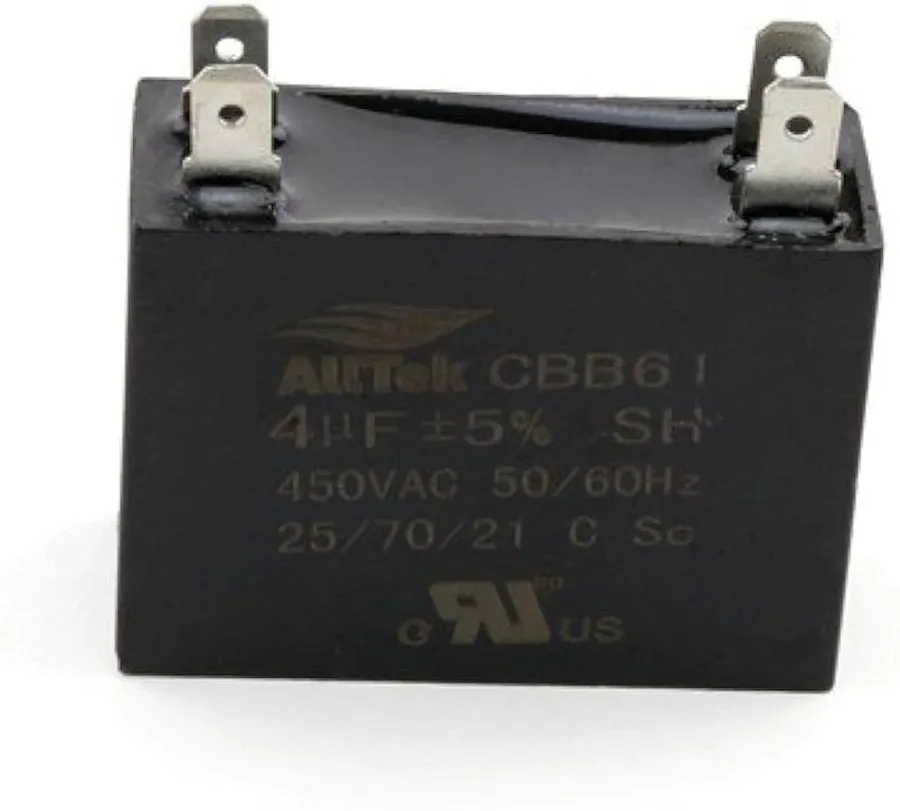
While a 4uF capacitor is a specific value, understanding its interchangeability with other capacitors is crucial for maintenance and repair. This section explores the principles behind capacitor substitution, focusing on voltage ratings and the implications of using slightly different values.
Capacitor substitution primarily concerns the voltage and capacitance ratings. While exact replacements are ideal, slight variations are often acceptable. It is critical to avoid substituting with a capacitor with a lower voltage rating, as this can lead to catastrophic failure. Capacitance variations should generally be limited to within the tolerance range of the original part (e.g. a +/-5% tolerance on the original 4uF capacitor would mean variations between 3.8 uF and 4.2 uF are acceptable).
| Parameter | 4uF Capacitor | Acceptable Substitution Criteria | Risk of Incorrect Substitution |
|---|---|---|---|
| Capacitance | 4uF | Generally within +/- 5 to 10% if the use is not too sensitive | Performance degradation, potential circuit malfunction |
| Voltage Rating | Specific (e.g., 250V, 450V) | Equal to or higher than original | Overheating, component failure, potential fire hazard |
| Capacitor Type | Film or Electrolytic | Same type is recommended, different type can be used based on design parameters | Performance degradation, potential circuit malfunction |
| Tolerance | Specific (e.g., +/-5%) | As close as possible to the original spec | Performance degradation, potential circuit malfunction |
For example, if a 4uF capacitor with a 250V rating needs replacement, a 4uF capacitor with a 450V rating is a safe substitute. A 3.8uF capacitor can be used in place of a 4uF capacitor in less sensitive applications, as long as the voltage rating is equal or higher. However, the use of a 4uF 200V capacitor would not be acceptable as a replacement for a 4uF 250V capacitor.
When seeking a replacement, always prioritize obtaining an exact match. If an exact match is not possible, a capacitor with a slightly higher voltage rating and the same capacitance (or within the tolerance range) is generally acceptable. If a component with the exact same type and value is not available, it is important to check the design specifications to ensure the substituted component will perform in the application correctly.
Identifying a Faulty 4uF Capacitor
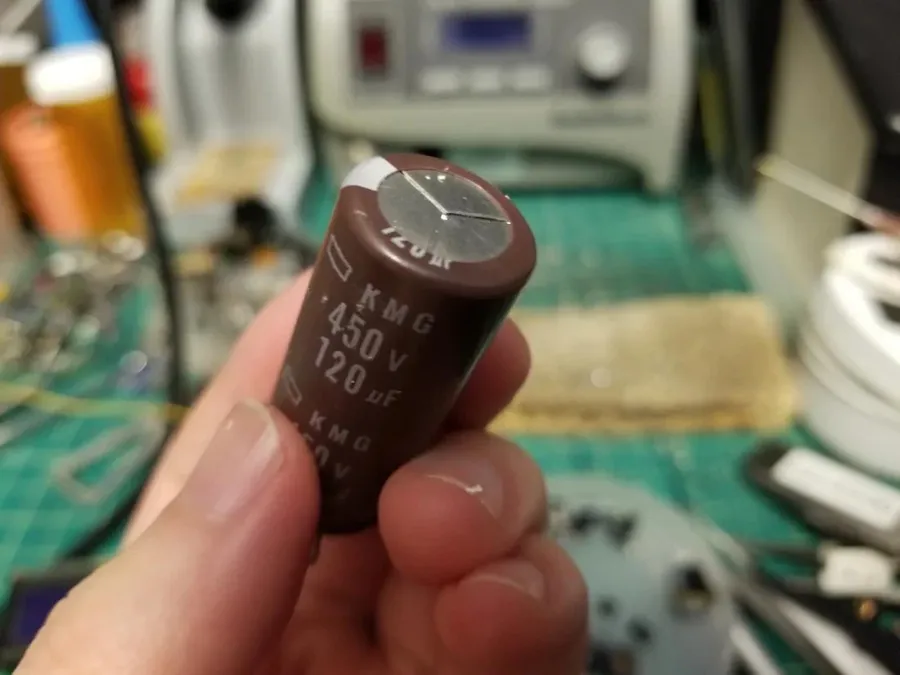
Identifying a malfunctioning 4uF capacitor is crucial for maintaining the proper operation of electrical equipment. Failure of a capacitor can lead to a variety of issues, including reduced performance, motor failure, or complete system breakdown. This section outlines common methods to diagnose a faulty 4uF capacitor.
- Visual Inspection
Carefully examine the capacitor for physical signs of damage. This includes looking for bulges or swelling of the capacitor casing, which indicates internal pressure buildup. Also check for any leaks of electrolyte fluid or cracks in the housing. These are all strong indicators of a faulty capacitor. Remember to disconnect the capacitor from the circuit before inspection for safety. - Performance Issues
Observe the performance of the equipment the capacitor is used in. A faulty 4uF capacitor in a motor circuit may cause the motor to start sluggishly, fail to start, or run with reduced speed or power. Other issues include unusual humming or buzzing sounds. These performance-related problems can also be attributed to other issues, so further diagnostic testing may be needed to be sure the capacitor is the source. - Multimeter Testing (Capacitance)
Use a digital multimeter capable of measuring capacitance. Remove the capacitor from the circuit, and ensure it is discharged properly. Measure the capacitance value, which should be near the stated 4uF. Deviations of more than 10% below its rated value, and sometimes even above it, can suggest degradation or failure. This test may require a multimeter specifically rated to test capacitance. - Multimeter Testing (Continuity and Resistance)
While a capacitance test is the best for testing if the value is incorrect, you can do a preliminary test with a multimeter. Ensure the capacitor is discharged and then check the capacitor's resistance. A healthy capacitor should initially show a low resistance, which will slowly increase to infinite resistance as the capacitor charges from the multimeter. If a low resistance is displayed persistently (short circuit) or if the multimeter does not indicate any resistance (open circuit) then it can be assumed that the capacitor is faulty and should be replaced. - Temperature Check
A failing capacitor may generate excessive heat. Use a non-contact thermometer or a safe method of measuring temperature, but only after making sure the capacitor is not exposed to any electrical energy. The heat can also be a clue to other failures but should be verified if a capacitor is suspect. If a capacitor is running very hot or feels unusually warm, this is a sign that it is faulty.
Frequently Asked Questions About 4uF Capacitors
This section addresses common questions regarding 4uF capacitors, clarifying their specifications, applications, and usage. These FAQs are designed to provide clear, concise answers to the most frequently encountered user queries.
- What does 'uF' stand for on a capacitor?
The symbol 'uF' stands for microfarad, which is a unit of capacitance. A farad is a large unit of capacitance, and a microfarad (uF) is one millionth of a farad (10^-6 F). It quantifies a capacitor's ability to store an electrical charge. - Can I replace a 4uF capacitor with one of a slightly different uF rating?
Generally, it is not advisable to replace a 4uF capacitor with a significantly different capacitance value. Minor variations might be acceptable in some non-critical applications, but using a capacitor with a different capacitance can cause the circuit to malfunction or damage components. It's crucial to stick with the original specification. - Is it safe to replace a 4uF capacitor with a capacitor that has a higher voltage rating?
Yes, replacing a 4uF capacitor with one that has a higher voltage rating is generally safe and often recommended. A higher voltage rating indicates the maximum voltage the capacitor can handle without failing. Using a capacitor with a higher voltage rating than specified will not cause any problems, as it provides an additional safety margin, but using a lower voltage rating can lead to premature failure. - What is the significance of voltage ratings on 4uF capacitors?
The voltage rating of a 4uF capacitor indicates the maximum voltage the capacitor can withstand without failing. It’s critical to choose a capacitor with a voltage rating equal to or higher than the circuit's maximum expected voltage. Common ratings for 4uF capacitors include 250V, 370V, and 450V AC, where AC refers to alternating current. Operating a capacitor above its rated voltage can lead to damage or failure. - What happens if a 4uF capacitor fails in a motor?
If a 4uF capacitor fails in a motor, it can lead to several issues, including the motor failing to start, running slowly, producing a humming sound, or overheating. The capacitor plays a critical role in providing the necessary phase shift for single-phase motor operation. A malfunctioning capacitor disrupts this process, affecting the motor's efficiency and potentially causing damage. - What are the common types of 4uF capacitors?
4uF capacitors commonly come in various types, including film capacitors (polyester, polypropylene), which are used in AC applications such as motors and power supplies. Electrolytic capacitors are also available, but these are less common in AC applications. Film capacitors are generally preferred for AC motor applications due to their higher reliability and tolerance to temperature and voltage fluctuations.
Where to Buy 4uF Capacitors and Price Considerations
Sourcing 4uF capacitors requires careful consideration of both availability and cost. The price of a 4uF capacitor is influenced by various factors, including the brand, specific performance characteristics, and the quantity being purchased. Understanding these aspects will enable informed procurement decisions.
- Online Marketplaces
Platforms like Amazon, eBay, and AliExpress offer a wide variety of 4uF capacitors from different manufacturers. This provides a convenient way to compare prices and specifications, but it's crucial to verify the seller's reputation and product authenticity. - Electronics Distributors
Companies such as Digi-Key, Mouser Electronics, and Arrow Electronics are authorized distributors that sell electronic components directly from manufacturers. They typically offer guaranteed quality and comprehensive technical documentation, but their prices might be slightly higher, particularly for single units. - Local Electronics Suppliers
Local electronic component stores are a good choice for immediate needs, offering the advantage of hands-on inspection and local support. However, their stock may be limited compared to larger distributors or online marketplaces, and prices can vary.
| Factor | Impact on Price |
|---|---|
| Brand | Reputable brands known for reliability often command higher prices due to their consistent quality and rigorous testing. |
| Voltage Rating | Capacitors with higher voltage ratings (e.g., 450V) tend to be more expensive than those with lower ratings (e.g., 250V) due to increased insulation requirements. |
| Type (Film, Electrolytic, etc.) | Film capacitors, especially those made from polypropylene, are typically pricier than electrolytic capacitors because of their superior performance characteristics, such as lower ESR and longer lifespan. |
| Tolerance | Capacitors with tighter tolerance (+/- 5% or better) may cost more due to the precision in manufacturing process. |
| Quantity | Bulk purchases generally reduce the per-unit cost of capacitors. Some distributors offer volume discounts. |
| Certifications | Capacitors certified by international safety standards (e.g., UL, VDE) could cost more but offer more reliability. |
Safety Precautions When Handling 4uF Capacitors
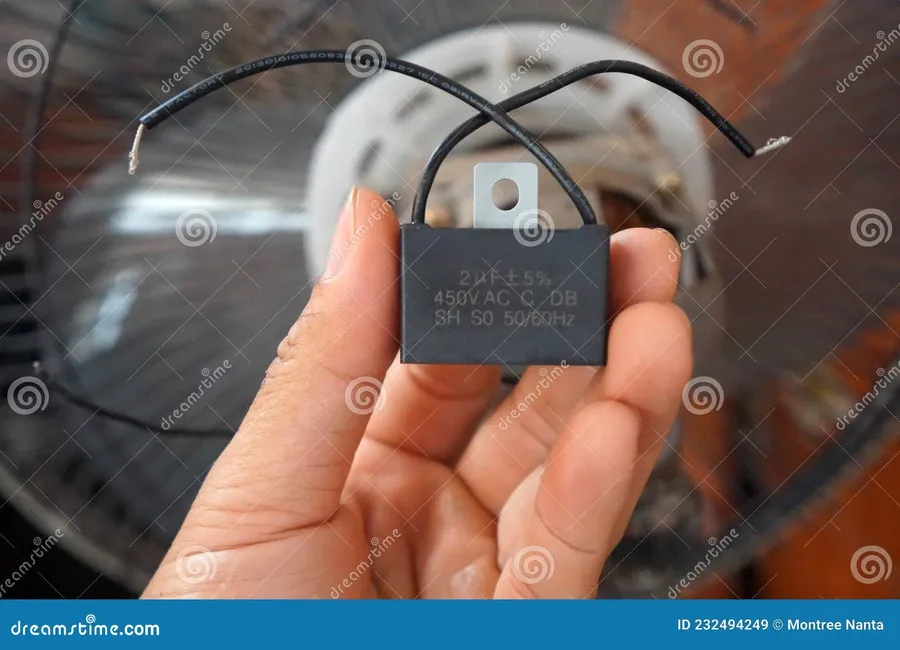
Handling 4uF capacitors, like all electrical components, requires adherence to safety protocols to prevent injury or damage. These precautions are crucial, especially considering that capacitors can store an electrical charge even when disconnected from a power source. Proper handling, discharge procedures, and disposal methods are key to safe interaction with these devices.
- Discharge Before Handling
Before touching or replacing a 4uF capacitor, it must be fully discharged. This is typically achieved by using a resistor to slowly dissipate the stored electrical charge. Never use a direct short (like a screwdriver) as this can cause sparks, damage, or personal injury due to the rapid discharge. A suitable discharge tool should be used by placing a high resistance (e.g 10K ohm) across the capacitor terminals, with an insulated handle and checking with a voltmeter to make sure the voltage has dropped to 0 volts before touching. - Use Insulated Tools
When working with capacitors in live circuits, always use insulated tools. This prevents accidental short circuits and reduces the risk of electrical shock. - Wear Safety Gear
Appropriate safety gear, including safety glasses and insulated gloves, should be worn when handling electrical components. These precautions help protect against potential hazards such as sparks or electrical arcs. - Proper Disposal
Capacitors should be disposed of according to local environmental regulations. Some capacitors contain materials that require special handling, so don't simply toss them into the regular trash bin. Some capacitors may contain electrolytic materials or specific films that can be harmful if not properly disposed of; this prevents environmental contamination. - Avoid Contact With Terminals
Even after discharging, avoid direct contact with the capacitor's terminals. Residual charges can sometimes exist, and it’s always best to err on the side of caution. When handling capacitors, avoid touching the terminals with bare skin to prevent any risk of electric shock. Use insulated tools or gloves. - Work in a Clean and Dry Environment
Ensure the work environment is clean and dry. Moisture can increase the risk of electrical shock or cause damage to the capacitor itself. It's essential to work in a well-lit and clutter-free area to avoid accidents and ensure you have adequate space to perform the replacement safely. - Double Check Connections
When installing a new capacitor, double check all connections for proper polarity if required (some are non polarized), and ensure all screws and fasteners are tight. Improper connections can lead to failure and potential safety issues. Follow the manufacturer’s guidelines and specifications.
The humble 4uF capacitor, often overlooked, is pivotal in ensuring the smooth operation of many electrical devices we rely on daily. Whether it's powering a fan or driving the compressor in your air conditioner, this tiny component plays a crucial role. When selecting a 4uF capacitor, considering the voltage rating, type, and tolerance is crucial to the application, and understanding equivalents can be a lifesaver. By understanding these components, we not only become better informed consumers but also gain a deeper appreciation for the technology that surrounds us. So, next time you encounter a 4uF capacitor, remember its quiet yet powerful contribution.
 AnyPCBA
AnyPCBA